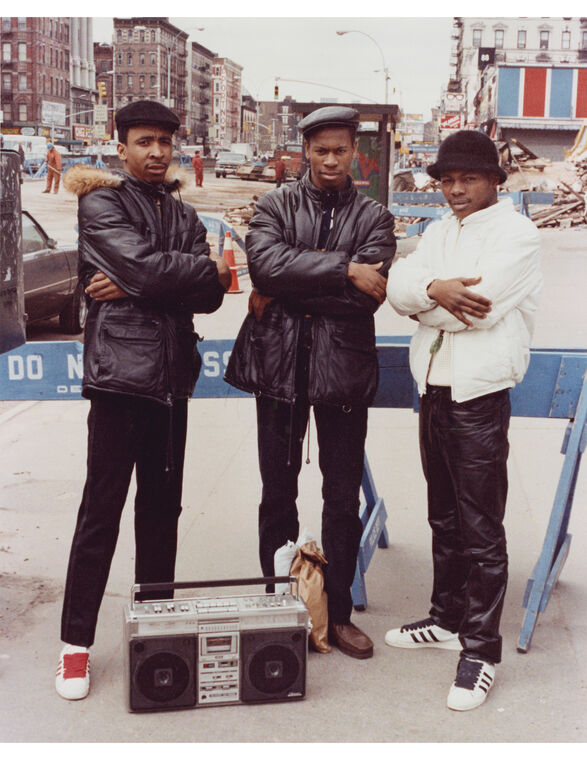
A Look Back at Jamel Shabazz’s 50-Year Journey in Documentary Photography Launches in the Bronx

Title: An Enduring Perspective: Jamel Shabazz’s “Seconds of My Life” Illustrates Fifty Years of Black American Existence through Imagery
For close to fifty years, Bronx-native photographer Jamel Shabazz has wielded his camera as a means of conveying truth, community, and cultural heritage. Famous for his heartfelt depictions of daily experiences in New York and beyond, Shabazz’s documentary photography honors humanity, unwaveringly dedicated to celebrating the dignity, depth, and flair of Black America. His newest display, Seconds of My Life: Photographs from 1975–2025, currently showcased at the Bronx Documentary Center Annex, is an extensive retrospective that confirms his status as one of the most significant visual narrators of our era.
The exhibition covers an incredible 50 years of photography—ranging from the gritty streets of 1970s Brooklyn to contemporary Coney Island—mapping both a personal and communal visual heritage. Highlighting timeless pieces like “Best Friends” (1982), “The X-Men” (1985), and “Black in America” (2010), the exhibit explores themes of community, resilience, fashion, and cultural pride, encouraging viewers to perceive American existence through Shabazz’s compassionate and insightful lens.
Born in 1960, Jamel Shabazz first picked up a camera at 15, influenced by his father’s passion for photography and the vibrant culture emerging in post–civil rights New York. Equipped with a Kodak Instamatic 126 borrowed from his mother, he initially photographed classmates and neighbors, instinctively attracted to the narratives in their expressions and the significance of capturing ephemeral moments. These initial portraits evolved into a lifelong commitment, now celebrated in exhibitions, publications, and worldwide recognition.
“A Great Day in Brooklyn” (2008), a highlight of the exhibition, embodies his focus on collectivity and memory—uniting numerous creatives, musicians, and community icons in a vibrant, unified frame. It serves as a visual homage to Art Kane’s iconic “A Great Day in Harlem” (1958), reframed through a contemporary lens.
While some photographers seek dramatic intensity or curated perfection, Shabazz seeks the essence of spirit. His images—chronicling everything from church ladies in lively discussions in 2024 to optimistic youths outside a Brooklyn brownstone in the 1980s—resonate with a sense of genuineness and collective humanity. “Photography has been my passport to meeting people, learning their stories, and sharing them with the world,” Shabazz articulates. This passport has led him through neighborhoods, correctional facilities, and cities, introducing him to strangers who swiftly transitioned into subjects, friends, and symbols.
His photography covers a broad spectrum: the jubilant (“A Time of Innocence,” 1980), the heartfelt (“Holding On,” 1995), and the sobering (“Rikers Island,” 1985). Throughout, a consistent thread surfaces—his deep-seated conviction in documenting the daily lives of Black individuals with love, precision, and artistry. In “Alicia Keys” (2018), his lens captures a cultural figure, yet he approaches her with the same respect displayed in his portrait of two girls sporting matching sunglasses, taken many years prior.
The Bronx Documentary Center’s exhibition, ongoing until April 20, 2025, is more than a collection of images; it serves as an interactive time capsule. Seconds of My Life is organized both thematically and chronologically, providing viewers with a visual repository that acts as a personal diary and a historical narrative. Each frame encapsulates not only faces but epochs—showcasing Pan-African fashion trends, street corner ministries, urban joy, and the relentless pursuit of justice.
Shabazz’s work is accessible and genuine, captured with empathy rather than exploitation. He does not shy away from America’s inconsistencies—the mass incarceration crisis, racial profiling, poverty—but always positions humanity at the forefront. Consider “Hope for a Better Tomorrow” (2014), where youth line a boardwalk, exuding not despair, but hope in their gazes. Or “Waiting” (2010), where a man is caught in a moment of reflection—an instance both tranquil and profoundly resonant in its stillness.
As Shabazz ponders his legacy, a guiding message emerges for future generations: Don’t hesitate to document your existence. Grasp a camera—be it film, digital, or a smartphone—and capture your reality. “What I wish for youth to understand is the significance of photography and documentation… It’s crucial to record our legacy,” he expresses.
In a time dominated by transient visuals and quickly scrollable moments, Jamel Shabazz’s portfolio remains grounded, lyrical, and vital. Seconds of My Life brings five decades of Black experience into sharp focus—not solely through the perspective of one artist but through the multitude of lives he has chosen to document.